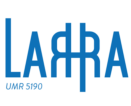Scope note for the class Social Relationship – C3 Back
Validated
Scope note
- Text
This class comprises phenomenons of a social relation between people, groups or countries as it is perceived in the context of shared intention. In other words, this class does not model a physical interaction of actors in space and time (for persons this interaction is modelled with the C18 Persons' Interaction class) but the perception of a phenomenon like friendship, marriage, apprenticeship, etc. that happens in the minds and the social space.
Each relationship generally involves only two instances of one or more classes. If more then two instances are involved (e.g. multilateral political relationships) the unity of time and social space must be given. If different persons or groups are socially interreladed at different times, or perceived as such in different social contexts, several instances of this class must be produced and provided with appropriate types.
If the relationship is symmetrical, the sdh-so:P15 involves partner property has to be used in order to associate the partners of the relationship. If the relationship is asymmetrical, the different roles actors can have in the relationship would be described through the intentional Actor's Role in a Social Relationship (a sub-class of crm:E89 Propositional Object).
Deprecated
If the relationship is oriented from a source to a target (the partners having a different position in the relationship), the properties sdh-so:P17 has relationship source and sdh-so:P18 has relationship target will be used. This generic treatment allows to express a direction of the relationship. The meaning of the direction will be explicitly defined in the controlled vocabulary of relationship types.
Given their different meanings, it is absolutely necessary to avoid mixing the two types of relationships: either use the sdh-so:P15 property or the sdh-so:P17 / sdh-so:P18 – they are disjoint.
- Language
- en




Comments
Francesco Beretta
Done.
on January 4, 2020 23:33Vincent Alamercery
In the last sentence, I suggest we replace "persistent items" with "actors".
on October 3, 2019 11:28